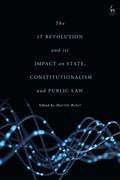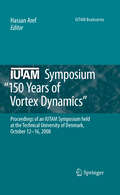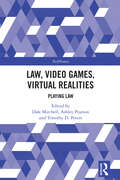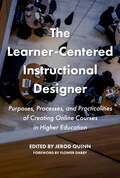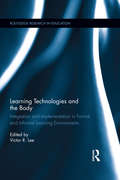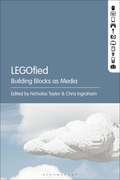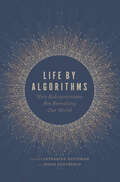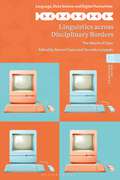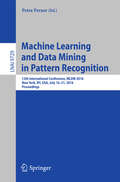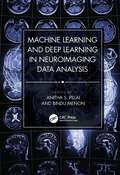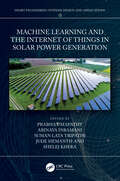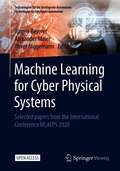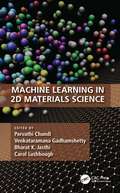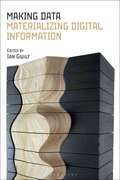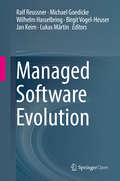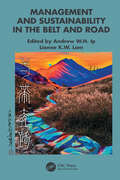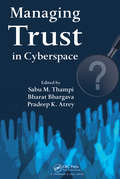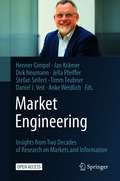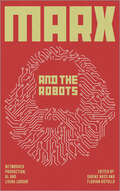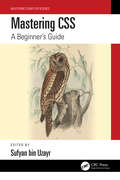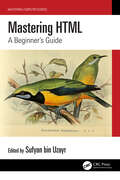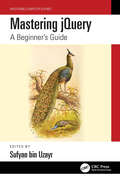- Table View
- List View
The IT Revolution and its Impact on State, Constitutionalism and Public Law
What is the future of constitutionalism, state and law in the new technological age? This edited collection explores the different aspects of the impact of information and technology revolution on state, constitutionalism and public law. Leading European scholars in the fields of constitutional, administrative, financial and EU law provide answers to fascinating conceptual questions including:- What are the challenges of information and technological revolution to sovereignty? - How will information and technology revolution impact democracy and the public sphere? - What are the disruptive effects of social media platforms on democratic will-formation processes and how can we regulate the democratic process in the digital age? - What are the main challenges to courts and administrations in the algorithmic society? - What is the impact of artificial intelligence on administrative law and social and health services? - What is the impact of information and technology revolution on data protection, privacy and human rights?
IUTAM Symposium on 150 Years of Vortex Dynamics: Proceedings of the IUTAM Symposium “150 Years of Vortex Dynamics” held at the Technical University of Denmark, October 12-16, 2008 (IUTAM Bookseries #20)
In 1858 Hermann von Helmholtz published a paper that today is recognized as the foundation of vortex dynamics. To celebrate the sesquicentennial of Helmholtz’s paper, IUTAM sponsored a symposium that was held at the technical university of Denmark in October 2008. The papers presented at the symposium gave a good overview of where the field of vortex dynamics stands today. This volume contains almost all of the papers presented as lectures at the symposium, and also a few of the poster papers. In this volume the reader will find up-to-date, state-of-theart papers on Point vortices, vortex sheets, vortex filaments, vortex rings, vortex patches, vortex streets, the vortex dynamics of swimming and flying, vortex knots, vortices in turbulent flows, vortices in computational fluid dynamics, the topology of vortex wakes, stability of vortex configurations, vortices on a sphere, geophysical vortices, cosmic vortices and much more.
Law and Emerging Issues: Proceedings of the International Conference on Law and Emerging Issues (ICLEI 2023)
In the ever-evolving landscape of law and governance, adaptation and innovation are key to addressing the challenges of our times. This edited volume is a testament to the ever-evolving nature of the legal field and the ongoing efforts of legal scholars and academicians to dissect, analyze, and grapple with the challenges and opportunities presented by these changes. The topics covered in this book span a wide spectrum of legal domains, reflecting the complex and rapidly changing nature of our contemporary world. From corporate governance structures to emerging challenges in the digital space, from analyzing the implications of the Social Security Code 2020 in India to understanding the legal developments surrounding unorganized migrant workers during the COVID-19 pandemic, the breadth of subjects addressed here is both impressive and vital.
Law and Emerging Issues: Proceedings of the International Conference on Law and Emerging Issues (ICLEI 2023)
In the ever-evolving landscape of law and governance, adaptation and innovation are key to addressing the challenges of our times. This edited volume is a testament to the ever-evolving nature of the legal field and the ongoing efforts of legal scholars and academicians to dissect, analyze, and grapple with the challenges and opportunities presented by these changes. The topics covered in this book span a wide spectrum of legal domains, reflecting the complex and rapidly changing nature of our contemporary world. From corporate governance structures to emerging challenges in the digital space, from analyzing the implications of the Social Security Code 2020 in India to understanding the legal developments surrounding unorganized migrant workers during the COVID-19 pandemic, the breadth of subjects addressed here is both impressive and vital.
Law, Video Games, Virtual Realities: Playing Law (TechNomos)
This edited volume explores the intersection between the coded realm of the video game and the equally codified space of law through an insightful collection of critical readings. Law is the ultimate multiplayer role-playing game. Involving a process of world-creation, law presents and codifies the parameters of licit and permitted behaviour, requiring individuals to engage their roles as a legal subject – the player-avatar of law – in order to be recognised, perform legal actions, activate rights or fulfil legal duties. Although traditional forms of law (copyright, property, privacy, freedom of expression) externally regulate the permissible content, form, dissemination, rights and behaviours of game designers, publishers, and players, this collection examines how players simulate, relate, and engage with environments and experiences shaped by legality in the realm of video game space. Featuring critical readings of video games as a means of understanding law and justice, this book contributes to the developing field of cultural legal studies, but will also be of interest to other legal theorists, socio-legal scholars, and games theorists.
The Learner-Centered Instructional Designer: Purposes, Processes, and Practicalities of Creating Online Courses in Higher Education
“What does a new instructional designer need to know to find her or his feet when working with faculty to create online classes?” This is a practical handbook for established and aspiring instructional designers in higher education, readers who may also be identified by such professional titles as educational developer, instructional technologist, or online learning specialist. Jerod Quinn, together with a team of experienced instructional designers who have worked extensively with a wide range of faculty on a multiplicity of online courses across all types of institutions, offer key guiding principles, insights and advice on how to develop productive and collegial partnerships with faculty to deliver courses that engage students and promote enduring learning.Designing and developing online classes for higher education takes a combination of pedagogical knowledge, the ability to build trust with faculty, familiarity with frameworks on how people learn, understanding of accessibility and inclusion, and technical skills to leverage a learning management system into an educational experience. Coming from diverse backgrounds, few instructional designers enter academia well versed in all of these aspects of creating online classes. This book provides the foundation on which instructional designers can build their careers. The guiding principle that animates this book is that the student experience and successful learning outcomes are paramount, and governs discussion of course design, pedagogy, the use of multimedia and technological advances, as well as the use of different forms of interactive exercises and group assignments. The succinct, informally written chapters offer ideas and means to apply theory to the daily work of instructional design and cover the four key components that drive this work in higher education: ·Defining the scope and main design approaches of our work·Building trust with the faculty we work with·Applying frameworks of how people learn·Mastering common online instructional practices.
Learning Technologies and the Body: Integration and Implementation In Formal and Informal Learning Environments (Routledge Research in Education)
This volume explores how technology-supported learning environments can incorporate physical activity and interactive experiences in formal education. It presents cutting-edge research and design work on a new generation of "body-centric" technologies such as wearable body sensors, GPS tracking devices, interactive display surfaces, video game controller devices, and humanlike avatars. Contributors discuss how and why each of these technologies can be used in service of learning within K-12 classrooms and at home, in museums and online. Citing examples of empirical evidence and specific implementation, this timely and critical volume examines how body responsive technologies are being used within the educational community to advance the next generation of educational technology.
LEGOfied: Building Blocks as Media
LEGOfied: Building Blocks as Media offers a multi-faceted exploration of LEGO fandom, addressing a blindspot in current accounts of LEGO and an emerging area of interest to media scholars: namely, the role of hobbyist enthusiasts and content producers in LEGO's emergence as a ubiquitous transmedia franchise. This book examines a range of LEGO hobbyism and their attendant forms of mediated self-expression and identity (their “technicities”): artists, aspiring Master Builders, collectors, and entrepreneurs who refashion LEGO bricks into new commodities (sets, tchotchkes, and minifigures). The practices and perspectives that constitute this diverse scene lie at the intersection of multiple transformations in contemporary culture, including the shifting relationships between culture industries and the audiences that form their most ardent consumer base, but also the emerging forms of entrepreneurialism, professionalization, and globalization that characterize the burgeoning DIY movement. The major aim of this edited volume, and what makes it a compelling project for media scholars, is its rigorous, mutli-dimensional articulation of how LEGO functions not just as toy, as cultural icon, or as transmedia franchise, but as a media platform. LEGOfied is centered around their shared experiences, qualitative observations, and semi-structured interviews at a number of LEGO hobbyist conventions. Working outwards from these conventions, each chapter of the book engages additional modes of inquiry -- media archaeology, aesthetics, posthumanist philosophy, feminist media studies, and science and technology studies -- to explore the origins, permutations and implications of different aspects of the contemporary LEGO fandom scene.
Life by Algorithms: How Roboprocesses Are Remaking Our World
Computerized processes are everywhere in our society. They are the automated phone messaging systems that businesses use to screen calls; the link between student standardized test scores and public schools’ access to resources; the algorithms that regulate patient diagnoses and reimbursements to doctors. The storage, sorting, and analysis of massive amounts of information have enabled the automation of decision-making at an unprecedented level. Meanwhile, computers have offered a model of cognition that increasingly shapes our approach to the world. The proliferation of “roboprocesses” is the result, as editors Catherine Besteman and Hugh Gusterson observe in this rich and wide-ranging volume, which features contributions from a distinguished cast of scholars in anthropology, communications, international studies, and political science. Although automatic processes are designed to be engines of rational systems, the stories in Life by Algorithms reveal how they can in fact produce absurd, inflexible, or even dangerous outcomes. Joining the call for “algorithmic transparency,” the contributors bring exceptional sensitivity to everyday sociality into their critique to better understand how the perils of modern technology affect finance, medicine, education, housing, the workplace, food production, public space, and emotions—not as separate problems but as linked manifestations of a deeper defect in the fundamental ordering of our society. Contributors Catherine Besteman, Alex Blanchette, Robert W. Gehl, Hugh Gusterson, Catherine Lutz, Ann Lutz Fernandez, Joseph Masco, Sally Engle Merry, Keesha M. Middlemass, Noelle Stout, Susan J. Terrio
Linguistics across Disciplinary Borders: The March of Data (Language, Data Science and Digital Humanities)
This volume highlights the ways in which recent developments in corpus linguistics and natural language processing can engage with topics across language studies, humanities and social science disciplines.New approaches have emerged in recent years that blur disciplinary boundaries, facilitated by factors such as the application of computational methods, access to large data sets, and the sharing of code, as well as continual advances in technologies related to data storage, retrieval, and processing. The “march of data” denotes an area at the border region of linguistics, humanities, and social science disciplines, but also the inevitable development of the underlying technologies that drive analysis in these subject areas.Organized into 3 sections, the chapters are connected by the underlying thread of linguistic corpora: how they can be created, how they can shed light on varieties or registers, and how their metadata can be utilized to better understand the internal structure of similar resources. While some chapters in the volume make use of well-established existing corpora, others analyze data from platforms such as YouTube, Twitter or Reddit. The volume provides insight into the diversity of methods, approaches, and corpora that inform our understanding of the “border regions” between the realms of data science, language/linguistics, and social or cultural studies.
Literature and Computation: Platform Intermediality, Hermeneutic Modeling, and Analytical-Creative Approaches (Routledge New Textual Studies in Literature)
Literature and Computation presents some of the most relevantly innovative recent approaches to literary practice, theory, and criticism as driven by computation and situated in digital environments. These approaches rely on automated analyses, but use them creatively, engage in text modeling but inform it with qualitative[-interpretive] critical possibilities, and contribute to present-day platform culture in revolutionizing intermedial ways. While such new directions involve more and more sophisticated machine learning and artificial intelligence, they also mark a spectacular return of the (trans)human(istic) and of traditional-modern literary or urgent political, gender, and minority-related concerns and modes now addressed in ever subtler and more nuanced ways within human-computer interaction frameworks. Expanding the boundaries of literary and data studies, digital humanities, and electronic literature, the featured contributions unveil an emerging landscape of trailblazing practice and theoretical crossovers ready and able to spawn and/or chart the witness literature of our age and cultures.
Machine Learning and Data Mining in Pattern Recognition: 12th International Conference, MLDM 2016, New York, NY, USA, July 16-21, 2016, Proceedings (Lecture Notes in Computer Science #9729)
This book constitutes the refereed proceedings of the 12th International Conference on Machine Learning and Data Mining in Pattern Recognition, MLDM 2016, held in New York, NY, USA in July 2016. The 58 regular papers presented in this book were carefully reviewed and selected from 169 submissions. The topics range from theoretical topics for classification, clustering, association rule and pattern mining to specific data mining methods for the different multimedia data types such as image mining, text mining, video mining and Web mining.
Machine Learning and Deep Learning in Neuroimaging Data Analysis
Machine learning (ML) and deep learning (DL) have become essential tools in healthcare. They are capable of processing enormous amounts of data to find patterns and are also adopted into methods that manage and make sense of healthcare data, either electronic healthcare records or medical imagery. This book explores how ML/DL can assist neurologists in identifying, classifying or predicting neurological problems that require neuroimaging. With the ability to model high-dimensional datasets, supervised learning algorithms can help in relating brain images to behavioral or clinical observations and unsupervised learning can uncover hidden structures/patterns in images. Bringing together artificial intelligence (AI) experts as well as medical practitioners, these chapters cover the majority of neuro problems that use neuroimaging for diagnosis, along with case studies and directions for future research.
Machine Learning and the Internet of Things in Solar Power Generation (Smart Engineering Systems: Design and Applications)
The book investigates various MPPT algorithms, and the optimization of solar energy using machine learning and deep learning. It will serve as an ideal reference text for senior undergraduate, graduate students, and academic researchers in diverse engineering domains including electrical, electronics and communication, computer, and environmental.This book: Discusses data acquisition by the internet of things for real-time monitoring of solar cells. Covers artificial neural network techniques, solar collector optimization, and artificial neural network applications in solar heaters, and solar stills. Details solar analytics, smart centralized control centers, integration of microgrids, and data mining on solar data. Highlights the concept of asset performance improvement, effective forecasting for energy production, and Low-power wide-area network applications. Elaborates solar cell design principles, the equivalent circuits of single and two diode models, measuring idealist factors, and importance of series and shunt resistances. The text elaborates solar cell design principles, the equivalent circuit of single diode model, the equivalent circuit of two diode model, measuring idealist factor, and importance of series and shunt resistances. It further discusses perturb and observe technique, modified P&O method, incremental conductance method, sliding control method, genetic algorithms, and neuro-fuzzy methodologies. It will serve as an ideal reference text for senior undergraduate, graduate students, and academic researchers in diverse engineering domains including electrical, electronics and communication, computer, and environmental.
Machine Learning for Cyber Physical Systems: Selected papers from the International Conference ML4CPS 2020 (Technologien für die intelligente Automation #13)
This open access proceedings presents new approaches to Machine Learning for Cyber Physical Systems, experiences and visions. It contains selected papers from the fifth international Conference ML4CPS – Machine Learning for Cyber Physical Systems, which was held in Berlin, March 12-13, 2020. Cyber Physical Systems are characterized by their ability to adapt and to learn: They analyze their environment and, based on observations, they learn patterns, correlations and predictive models. Typical applications are condition monitoring, predictive maintenance, image processing and diagnosis. Machine Learning is the key technology for these developments.
Machine Learning in 2D Materials Science
Data science and machine learning (ML) methods are increasingly being used to transform the way research is being conducted in materials science to enable new discoveries and design new materials. For any materials science researcher or student, it may be daunting to figure out if ML techniques are useful for them or, if so, which ones are applicable in their individual contexts, and how to study the effectiveness of these methods systematically. KEY FEATURES • Provides broad coverage of data science and ML fundamentals to materials science researchers so that they can confidently leverage these techniques in their research projects. • Offers introductory material in topics such as ML, data integration, and 2D materials. • Provides in-depth coverage of current ML methods for validating 2D materials using both experimental and simulation data, researching and discovering new 2D materials, and enhancing ML methods with physical properties of materials. • Discusses customized ML methods for 2D materials data and applications and high-throughput data acquisition. • Describes several case studies illustrating how ML approaches are currently leading innovations in the discovery, development, manufacturing, and deployment of 2D materials needed for strengthening industrial products. • Gives future trends in ML for 2D materials, explainable AI, and dealing with extremely large and small, diverse datasets. Aimed at materials science researchers, this book allows readers to quickly, yet thoroughly, learn the ML and AI concepts needed to ascertain the applicability of ML methods in their research.
Making Data: Materializing Digital Information
For many outside of the scientific community, big data and the forms it takes, such as statistical lists, spreadsheets and graphs, often seem abstract and unintelligible. This book investigates how digital fabrication and traditional making approaches are being used to present data in newly engaging and interesting ways.The first part of the book introduces the basic premise of the data object and the concept of making digital data into a physical form. Contributors cover topics such as biometrics, new technology, the economics of data and open and community uses of data. The second part presents a selection of exemplar forms and contexts for the application of data-objects, such as smart surfaces, smart cities, augmented reality techniques and next generation technical interfaces that blend physical and digital elements.Making Data delivers the importance and likely future prevalence of physical representations of data. It explores the creative methods, processes, theories and cultural histories of making physical representations of information and proposes that the making of data into physical objects is the next important development in the data visualisation phenomenon.
Managed Software Evolution
This open access book presents the outcomes of the “Design for Future – Managed Software Evolution” priority program 1593, which was launched by the German Research Foundation (“Deutsche Forschungsgemeinschaft (DFG)”) to develop new approaches to software engineering with a specific focus on long-lived software systems. The different lifecycles of software and hardware platforms lead to interoperability problems in such systems. Instead of separating the development, adaptation and evolution of software and its platforms, as well as aspects like operation, monitoring and maintenance, they should all be integrated into one overarching process.Accordingly, the book is split into three major parts, the first of which includes an introduction to the nature of software evolution, followed by an overview of the specific challenges and a general introduction to the case studies used in the project. The second part of the book consists of the main chapters on knowledge carrying software, and cover tacit knowledge in software evolution, continuous design decision support, model-based round-trip engineering for software product lines, performance analysis strategies, maintaining security in software evolution, learning from evolution for evolution, and formal verification of evolutionary changes. In turn, the last part of the book presents key findings and spin-offs. The individual chapters there describe various case studies, along with their benefits, deliverables and the respective lessons learned. An overview of future research topics rounds out the coverage.The book was mainly written for scientific researchers and advanced professionals with an academic background. They will benefit from its comprehensive treatment of various topics related to problems that are now gaining in importance, given the higher costs for maintenance and evolution in comparison to the initial development, and the fact that today, most software is not developed from scratch, but as part of a continuum of former and future releases.
Management and Sustainability in the Belt and Road
China’s Belt and Road Initiatives (BRI) is an ambitious infrastructure project conceived in 2013 by President Xi Jinping with development and investment initiatives stretching from Asia and Europe that reflect the original Silk Road with business networks through countries such as Afghanistan, Kazakhstan, Kyrgyzstan, Tajikistan, Turkmenistan, and Uzbekistan, as well as India and Pakistan, spanning a route of more than 4,000 miles and history that can be dated back more than 2,200 years. Given the background of China’s unique approach in fighting COVID-19, and against the backdrop of sluggish economic growth, innovation, and management, sustainable development of BRI will be the key and the driving force for the post-pandemic economic recovery of many countries, especially as BRI countries now account for nearly 30% of China’s foreign trade and 15% of outward direct investment. The vision to create a vast network of railways, energy pipelines, highways, and streamlined border crossings to expand the international use of Chinese currency and improve connectivity to China is good foresight and proved fortuitous when the COVID-19 pandemic came to plague the world, and amid the conflicts between the United States and China as well as the war between Russia and Ukraine. Since the inception of BRI, many books have been written to cover topics ranging from globalization to detailing how China’s business and politics are a major motivation for China’s overseas economic activities with case studies and practices, yet few of these books provide a structured approach to the sustainable management of BRI projects. This book is about how to manage the innovation, sustainability, and business necessary to make BRI work and how to handle the issues, problems, and crises that may arise in the process. Participants of BRI projects can take on many different roles, but ultimately, it is team effort and leadership that creates successful projects. Here, readers will find guidelines and insights to survive and prosper in a myriad of BRI opportunities and risks. Most important of all, this book provides a glimpse of different approaches for success in BRI projects, including sustainability, environmental issues, social and political aspects, technology, choice of industry, project management, education and training, governance, and many more.
Managing Trust in Cyberspace
In distributed, open systems like cyberspace, where the behavior of autonomous agents is uncertain and can affect other agents' welfare, trust management is used to allow agents to determine what to expect about the behavior of other agents. The role of trust management is to maximize trust between the parties and thereby provide a basis for cooper
Market Engineering: Insights from Two Decades of Research on Markets and Information
This open access book provides a broad range of insights on market engineering and information management. It covers topics like auctions, stock markets, electricity markets, the sharing economy, information and emotions in markets, smart decision-making in cities and other systems, and methodological approaches to conceptual modeling and taxonomy development. Overall, this book is a source of inspiration for everybody working on the vision of advancing the science of engineering markets and managing information for contributing to a bright, sustainable, digital world. Markets are powerful and extremely efficient mechanisms for coordinating individuals’ and organizations’ behavior in a complex, networked economy. Thus, designing, monitoring, and regulating markets is an essential task of today’s society. This task does not only derive from a purely economic point of view. Leveraging market forces can also help to tackle pressing social and environmental challenges. Moreover,markets process, generate, and reveal information. This information is a production factor and a valuable economic asset. In an increasingly digital world, it is more essential than ever to understand the life cycle of information from its creation and distribution to its use. Both markets and the flow of information should not arbitrarily emerge and develop based on individual, profit-driven actors. Instead, they should be engineered to serve best the whole society’s goals. This motivation drives the research fields of market engineering and information management. With this book, the editors and authors honor Professor Dr. Christof Weinhardt for his enormous and ongoing contribution to market engineering and information management research and practice. It was presented to him on the occasion of his sixtieth birthday in April 2021. Thank you very much, Christof, for so many years of cooperation, support, inspiration, and friendship.
Marx and the Robots: Networked Production, AI and Human Labour
Marxist discourse around automation has recently become waylaid with breathless techno-pessimist dystopias and fanciful imaginations of automated luxury communism. This collection of essays by both established veterans of the field and new voices is a refreshingly sober materialist reflection on recent technological developments within capitalist production. It covers a broad range of digital aspects now proliferating across our work and lives, including chapters on the digitalisation of agriculture, robotics in the factory and the labour process on crowdworking platforms. It looks to how 20th century Marxist predictions of the ‘workerless factory’ are, or are not, coming true, and how ‘Platform Capitalism’ should be understood and critiqued. Through rich empirical, theoretical and historical material, this book is necessary reading for those wanting a clear overview of our digital world.
Mastering CSS: A Beginner's Guide (Mastering Computer Science)
Cascading Style Sheets (CSS) is an open-source programming language used in website building and HTML templates that integrates all relevant information related to web page displays. CSS is used to format the look and structure of a web page, as well as to set design features such as basic layout, colors, and fonts. CSS allows for continuity between different web pages on the website and makes webpage development easier and faster. This book has been created to help readers understand and learn the concepts of CSS. It discusses the fundamental concepts of CSS, including its properties and functions, and guides the reader through creating websites with it. Key Features: Examines the fundamentals of CSS, values, selectors, and queries Discusses its application in modern web development to help readers to quickly advance the necessary information Explores animations, grids, flexboxes, masking, filtering, and compositing using CSS Mastering CSS is a valuable resource for anyone who wants to create a website. After finishing this book, readers will quickly build their website with absolute ease, even if they were utterly oblivious to it before.
Mastering HTML: A Beginner's Guide (Mastering Computer Science)
An open-source, HyperText Markup Language, or HTML is a programming language used in website building and website templates. It is used to format the look and format of a web page, to set design features such as basic layout, colors, and fonts. CSS allows for continuity between different web pages on the site and makes webpage development easier and faster. CSS frameworks are used for developing responsive and mobile-friendly websites. Mastering HTML: A Beginner’s Guide examines the fundamental concepts of HTML, its history, all the different versions available, and its advantages and disadvantages. Written in a concise and easy-to-understand format, each chapter includes examples and details of correct code output and HTML. This book is a valuable resource for anyone who wants to create web page structures. After finishing this book, readers will be able to build their website quickly and with absolute ease. Key Features: Discusses basic concepts of HTML such as common HTML attributes, doctype declaration, Block level elements, inline elements, etc. Presents various elements, attributes and entities in HTML including a list of core attributes and entities used in HTML. Examines HTML Forms and other advanced topic such as Graphics, Canvas, SVG, etc. Introduces text formatting and links tags used in HTML such as blockquote, quotation, anchor and many more.
Mastering jQuery: A Beginner's Guide (Mastering Computer Science)
With a combination of flexibility and feature-rich design, jQuery has changed the way millions of people write JavaScript. It makes tasks such as HTML document conversion, animation, event management, and Asynchronous JavaScript and XML (AJAX) much easier with an easy-to-use API that works on a wide variety of browsers. This book is a detailed guide for beginners to understand jQuery and its programming techniques. It discusses the fundamental concepts of jQuery and provides a roadmap for creating websites using jQuery programming. Key Features: Follows a hands-on approach and offers practical lessons and tutorials related to jQuery Provides a special focus on animations and effects using jQuery programming Includes detailed tutorials meant for beginners to jQuery Mastering jQuery: A Beginner’s Guide is an exciting journey for anyone who wants to create an animated website. This is a valuable resource for developers already familiar with HTML and CSS and little understanding of JavaScript. After finishing this book, readers will be able to quickly build their website with absolute ease.
